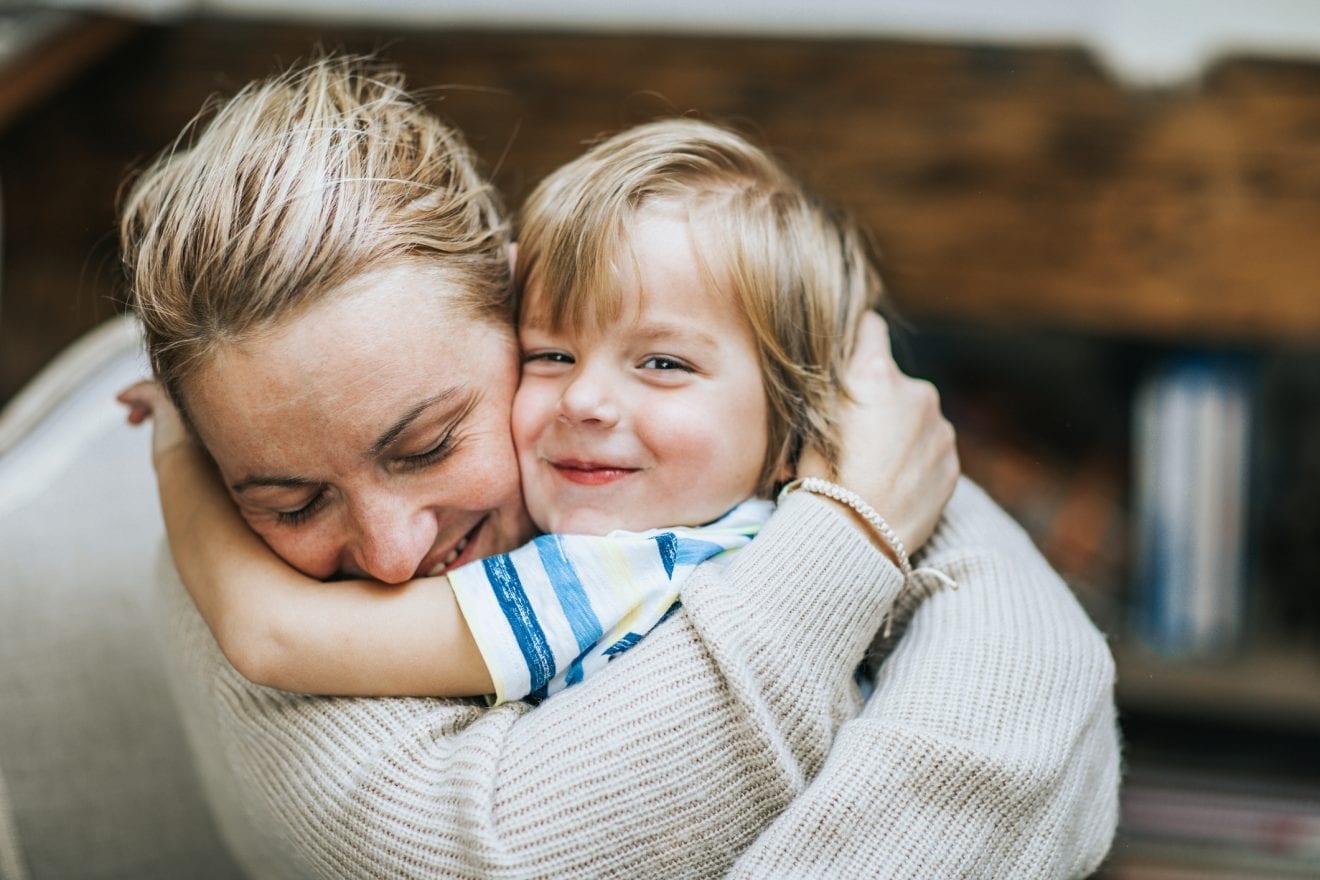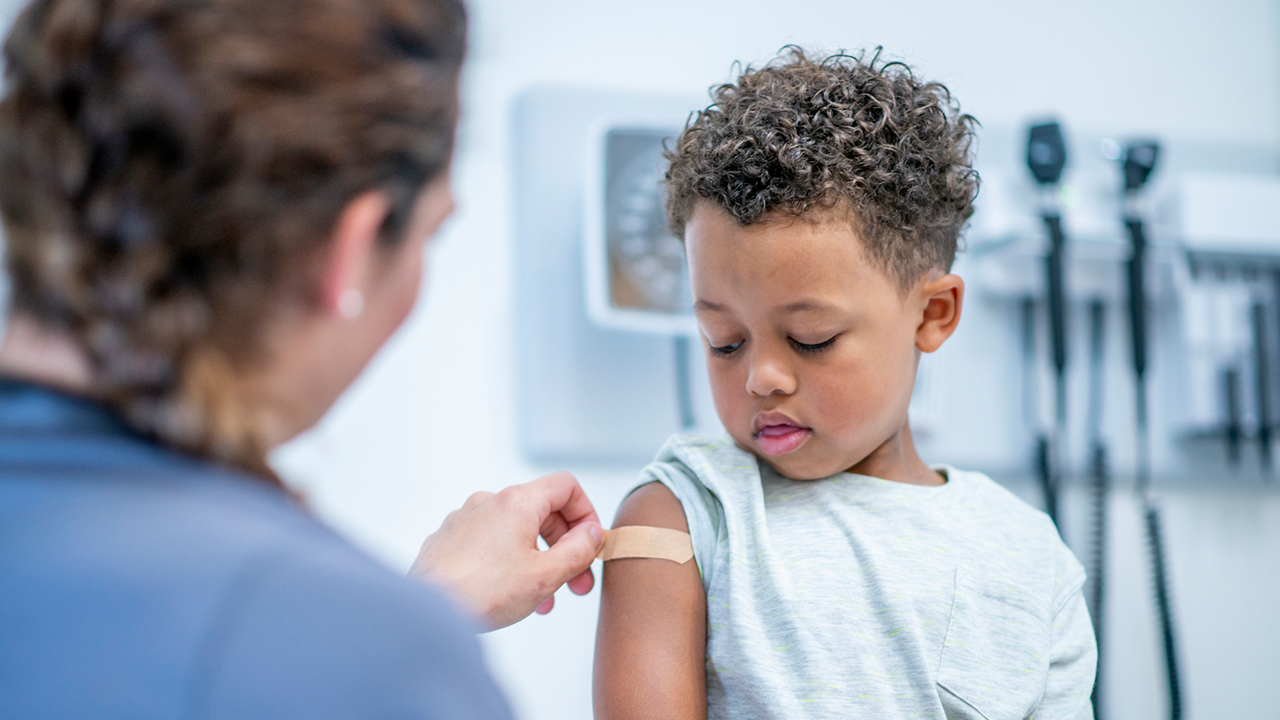In my work with families, there are generally two things parents want for their kids: to know their children are happy and to ensure they are raising good people. Teaching kindness is an essential way that you can help your children with both of these things. Being kind is an intentional act, and it benefits other people. It shows deep and selfless concern for others without expecting anything back. Kindness and compassion are vital parts of a child’s development of social and emotional skills. These can have positive impacts on their health, happiness, and well-being.1
What Is Kindness for Kids?
Kindness is one of the most powerful and useful social-emotional skills we possess. It’s ingrained in us to want to exist harmoniously in groups (for our safety and sense of connection), so we instinctively want to be kind. Our brain rewards us by releasing feel-good chemicals when we are kind; it’s not called the “helpers high” for nothing!2 This motivates us to keep repeating certain behaviors — we feel good after we help other people or demonstrate kindness, so we act kindly again in the future because we want to experience that feeling again.
Our brain is looking after our best interests and does this because kindness and compassion help us make and keep strong relationships. Essentially, we cement our spot in a social group by being kind, which keeps us protected, as people will look out for us, and we remain socially connected.3
Areas of Teaching Kindness for Kids
Kindness for kids can be focused on three areas:4
- Kind thoughts: These relate to how someone understands how their behaviors or kindness can impact other people (and themselves). It’s also how they think about or consider others (judgment, discrimination, compassion, and empathy).
- Kind emotions: Kind feelings include sympathy, respect, guilt when they have done something wrong or feeling proud when they have acted kindly.
- Kind behaviors: These are the actual doing or following through from thoughts and emotions. Can a child take this information and do kind deeds in the world? Examples could include cooperating, listening, sharing, being inclusive, etc.
The trouble with kids and kindness is that, developmentally, they can be slightly selfish at times. Anyone with a toddler will likely have experienced the “me, mine, now” phase, which is exactly what it sounds like (it’s all about me, everything is mine, and I want it now). Kids also understand kindness differently than adults.5 They may think about consequences rather than intentions, or they might not fully understand the outcome of their behavior: “If I snatch the toy, it will make my brother feel sad.”
Developmentally, our children are in middle childhood before they can genuinely conceptualize empathy or step into someone else’s shoes and consider how they feel about something.6 Taking the previous example further, “I would feel sad if someone took my toy, so I know my brother will feel sad if I take his toy.” So, while we naturally desire to be kind, we must actively and intentionally teach our kids how to be kind.
Why Kindness Is Important
Teaching our kids how to practice kindness is critical for their health and well-being. There are several direct benefits of being kind. As I mentioned before, it helps “grease the wheels” or, in essence, makes social interactions easier, and as a result, relationships tend to be stronger. People want to be around others who care for them or have a reciprocal relationship (If I help them, they’ll help me later).3 Being kind improves peer connectedness and acceptance.
Kindness is also associated with self-esteem. Children who are kind and do good deeds for the sake of doing them feel good about themselves.1 Acts of kindness improve our sense of well-being and interconnectedness with other people and can give us a sense of purpose. As a result, kind people tend to be more self-accepting and mindful and experience positive relationships with others.7 The lovely hormones/chemicals released by the brain (remember the “helper’s high”) can help combat things like heart disease, reduce stress levels, help cope with pain, and generally make us feel calm and happy.2
11 Tips for Teaching Kindness to Kids
Although our little ones are built to be empathetic and consider the needs of others, it’s still vital that we teach kindness and give our children ways to learn how to practice kindness. Some specific tips and activities for kids that teach them kindness in their everyday lives include:
1. Model Kindness
Your child must see you “walking the walk.” Do they see you being kind to other people in your community? Within your family? If you want your child to learn about kindness, there is no “magic bullet.” But seeing you be a compassionate, empathetic person will help them see the importance of kindness and give them a blueprint to show how it’s done.
2. Receive Kindness
When you model kindness, you must be kind toward your child. If they receive kindness, then it creates a big impression for them. They know what it feels like to be on the receiving end of a kind act, and when we see or experience kindness, research tells us that we are very likely to be then kind ourselves . . . kindness is contagious.8
3. Remember That Language Is Important
It’s essential to consider the language you use and the language you teach your children. Do you, or others around you, tell jokes that are a bit “off” or play off of dangerous stereotypes? Do you accidentally use hurtful language or sayings rooted in discrimination or slang that could upset certain groups? Are you using your manners and saying “please” and “thank you”? Kindness is not just about our actions but the words we use.
4. Read
Kindness activities for preschoolers can include things like reading books to help them learn about other people’s lives and experiences. Children of any age will enjoy reading, but slightly older children will start to learn about or take in the message underpinning the story. Can you read to them about different holidays celebrated worldwide, or perhaps stories where children who experience differences (physical, emotional, or development) expand their understanding of other people’s perspectives? Reading is a great way to expose them to different stories and lives, which can be a building block of empathy.
5. Play Dress-Up
When children play dress-up, they get to slip on a new character and pretend. Although it seems like fun or just imaginative play, it has a significant influence on the development of empathy. Children get to practice stepping into someone else’s shoes and considering other world views by taking on or pretending to be a character. In addition, if you can offer some targeted costumes related to empathetic professions or roles (nurses, vets, teachers, etc.), they can try out jobs or activities targeted explicitly toward being kind and looking after others.9
6. Learn About Emotions
You can teach your child kindness by helping them understand emotions by naming them when you see them (i.e., “Oh, I can see you are so sad”) as well as naming your feelings (i.e., “I’m feeling a bit frustrated right now”). You can also teach them about big feelings versus little feelings (irritated versus enraged) and play games where you match or guess feelings to help them learn about different emotions. If they know the word or the feeling, they will be better tuned into their own and others’ emotional experiences (which forms the basis for empathy).
7. Teach Them Empathy
Attune to them and their needs. When you provide a kind response to your child, you are demonstrating empathy. It’s also important to show them how you empathize with others. You can share your thoughts or even be strategic about narrating something you are seeing. “Oh my gosh, that little girl’s balloon just got caught in the breeze and blew away. I bet she is feeling really sad right now.”
8. Use Emotional Regulation Strategies
It’s kind of hard to be nice to people when you are struggling with your own big emotions like sadness, anger, jealousy, etc. So, we must teach our kids kindness by teaching them how to safely and appropriately manage their big emotions. This means using emotional regulation strategies like mindfulness, meditation, and journaling.
9. Expand Their Circle of Concern
Get your child thinking about other people. You can read stories like I mentioned earlier to get them thinking about or in the mind frame of how other people live. Volunteering your time to work with groups of people with different life circumstances or abilities can expose your child to other lives. You could also celebrate or learn about holidays, religions, and historical events to get them to consider people’s experiences outside their immediate circle.
10. Foster Kind Habits
Practice kindness in your lives and make these habits or traditions. Perhaps every time your child outgrows their clothes, or when the seasons change, you can pack their old clothes and donate them. Perhaps every Christmas, you put together a care package or present for a child their age that they can donate to a local refuge. Maybe you can send your old towels to a local animal shelter. You don’t need to spend lots of money; you can donate old or unused things or your time and effort. But involve your child in these acts to teach them kindness regularly.
11. Praise
I don’t mean praise in the regular way that you probably think. It’s nice to say, “Good job, you were so kind to your cousin when you shared your toy,” but when we do this, we create a reliance on other people for our kids to feel good about themselves. Or they rely on this praise or expect it when they have been kind. This pretty much undermines the whole premise of being kind (doing something for the sake of it, not for the reward). Instead, ask them how they feel after a kind act. “Wow, how do you feel after donating all your old toys? How do you think the children who receive them might feel?” You are getting them thinking about their actions and the consequences and praising themselves, which helps them feel confident and pretty darn good about themselves.
Although kindness is something ingrained in our kids, it’s essential that we actively encourage it. Not only will teaching them kindness help your child feel good for helping and making a positive change in the community or the people in their lives, but they will also feel good about themselves. Remember when I first said parents generally want two things for their kids? That they will be happy and have raised a “good” human? Helping your child become kind will fulfill these and help them experience positive well-being, relationships, and general happiness. A win-win!

 PARENTING TIPS
PARENTING TIPS







 PREGNANCY
PREGNANCY








 BABY CARE
BABY CARE








 TODDLERS
TODDLERS








 TEENS
TEENS








 HEALTH CARE
HEALTH CARE






 ACTIVITIES & CRAFTS
ACTIVITIES & CRAFTS








 CONTACT
CONTACT ABOUT
ABOUT















